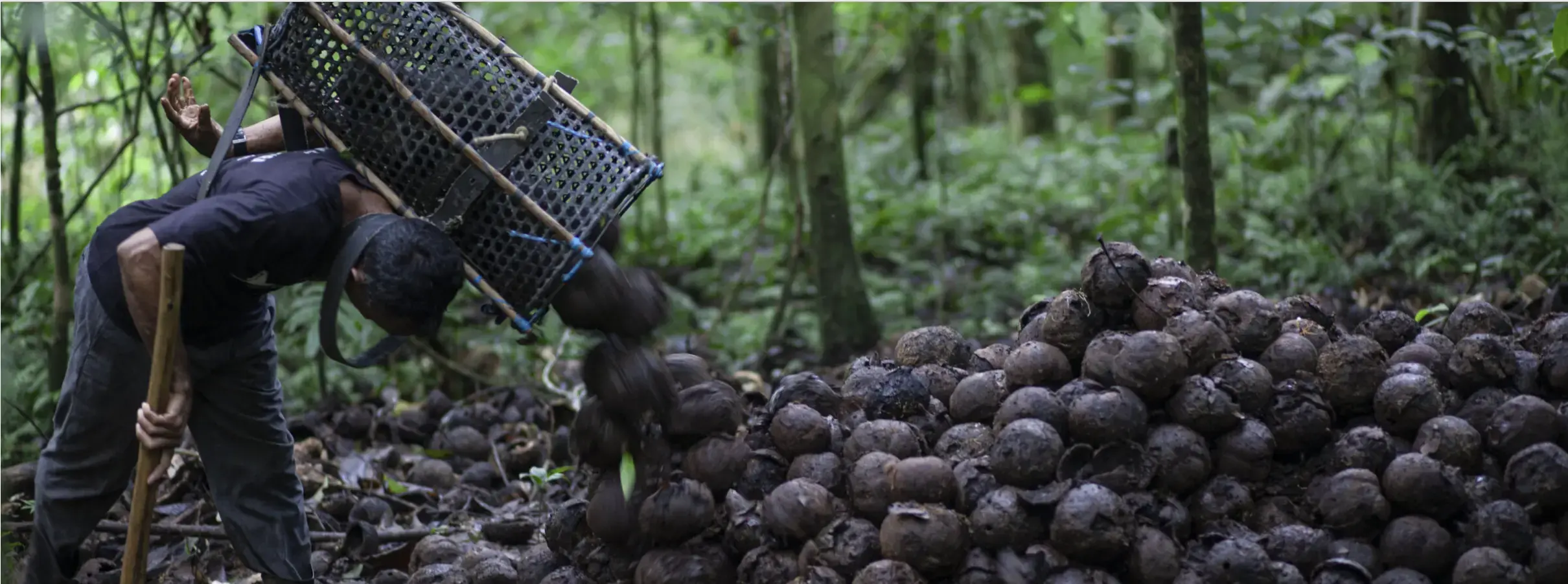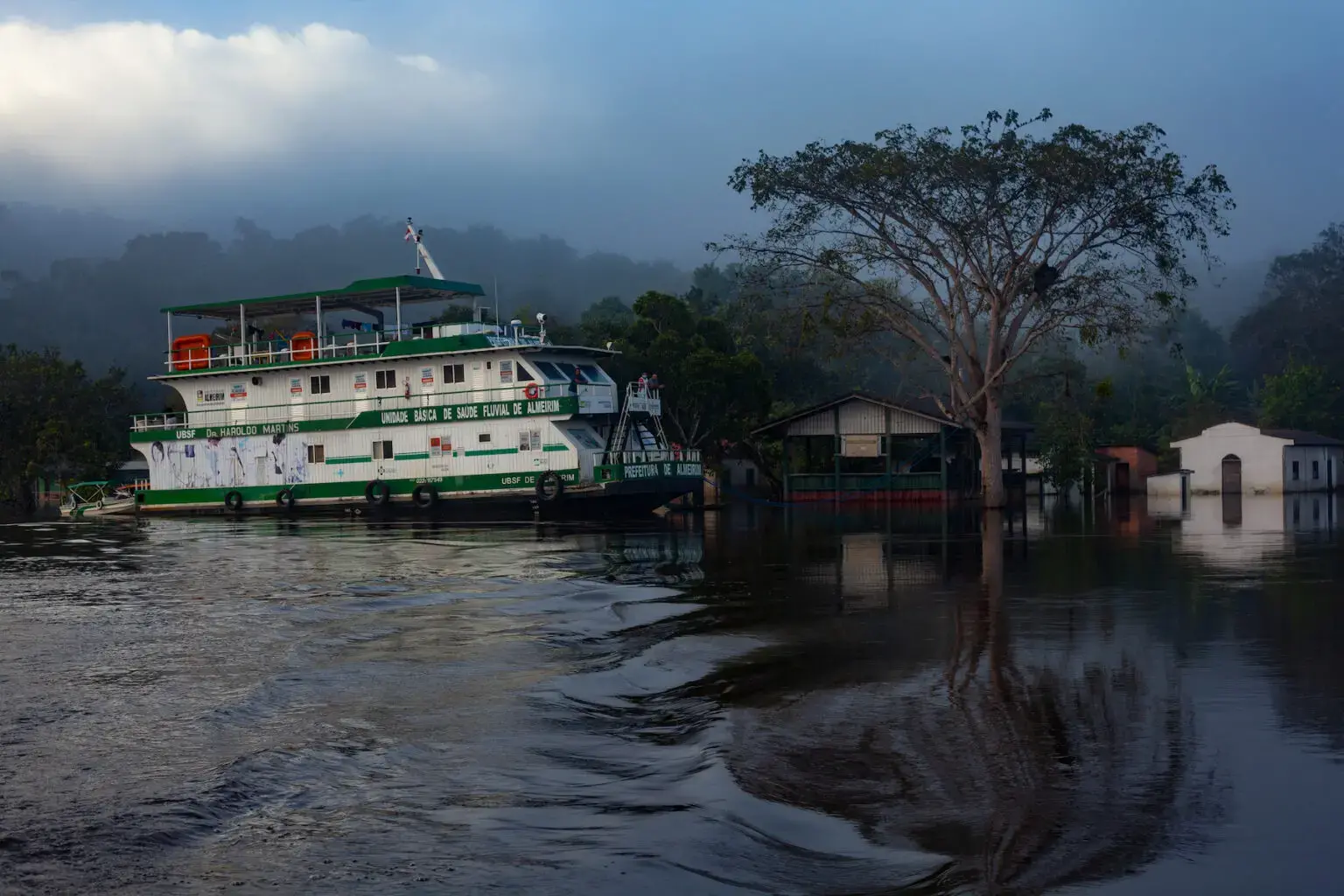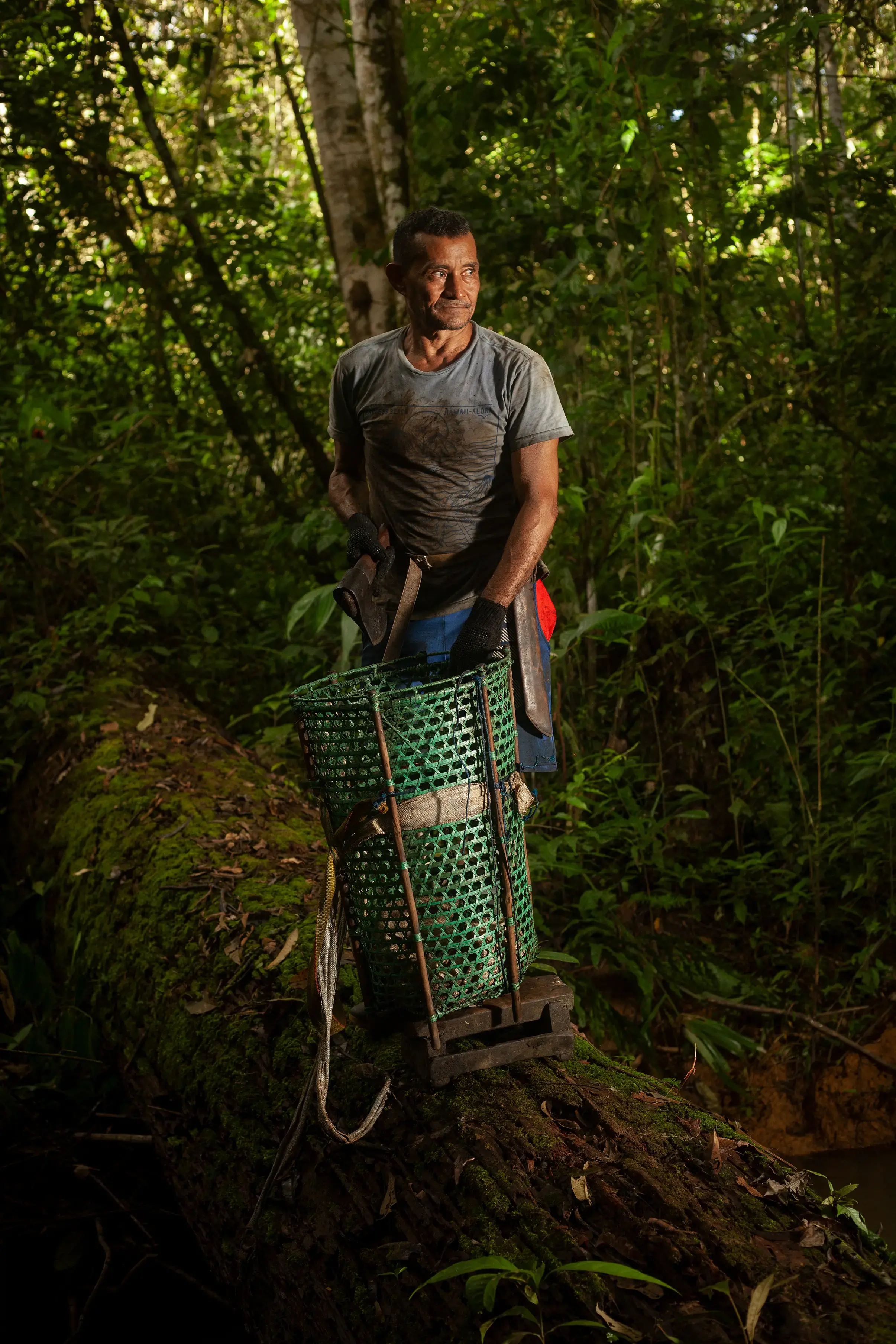This story excerpt was translated from Portuguese. To read the original story in full, visit Mongabay. You may also view the original story on the Rainforest Journalism Fund website. Our website is available in English, Spanish, bahasa Indonesia, French, and Portuguese.

- In the Calha Norte of Pará, a region that is home to the largest mosaic of conservation units and Indigenous lands in the world, the community extraction of Brazil nuts reveals an opportunity for the future of the Amazon forest.
- Brazil nut gatherers in the Paru River have preserved the traditional way of gathering for generations.
- In the entire Brazilian Amazon, about 300,000 people depend on the Brazil nut production chain for their livelihood.
- The market for the product, however, has not yet recovered from the impacts of the pandemic, the war in Ukraine, and a major drought in 2016.
In a fast boat called a voadeira by the riverside dwellers, the trip between the Pará State city of Almeirim, on the banks of the Amazon River, and the Cafezal community takes almost three hours. "To reach the nut groves, it takes another three hours in a motor boat," says agro-extractivist Otacílio França Alves, co-founder of the Association of Agro-Extractivist Residents of the Communities (Asmacaru). On this route, the boats cross the Marapi river attached to batelões, canoes that are used to transport the product from the forest area where the Brazil nut trees grow.
Asmacaru was established in 2001 with the objective of organizing the Brazil nut chain, generating income, and expanding trade conditions for the families. During the harvest, from March to July, the collectors stay in the forest in search of the Brazil nut (Bertholletia excelsa), the seed of one of the most emblematic species of the Amazon rainforest. The tree is known for being a "long-lived pioneer:" In dry soils, where it occurs, it lives up to 500 years and can reach 50 meters in height and 5 meters in diameter at its trunk.

As a nonprofit journalism organization, we depend on your support to fund journalism covering underreported issues around the world. Donate any amount today to become a Pulitzer Center Champion and receive exclusive benefits!
The groups are divided into colocações, as the areas occupied by Brazil nut groves are called. Cafezal has a permanent concession for extraction activities in seven of them, all used by the 26 Asmacaru members. The area of occurrence of Brazil nut trees is large and dispersed: The distance between two placements can reach more than 10 km.
Watch the video:















